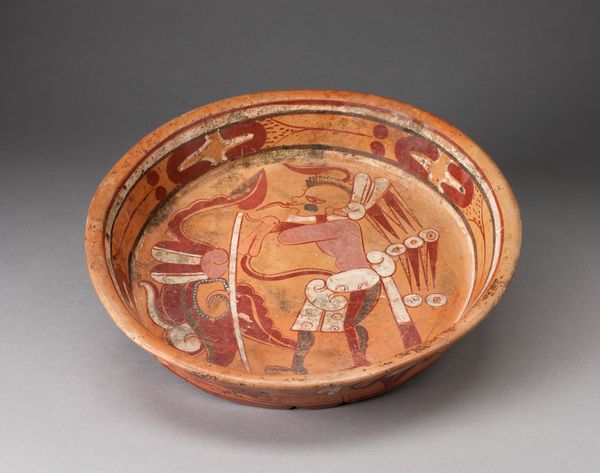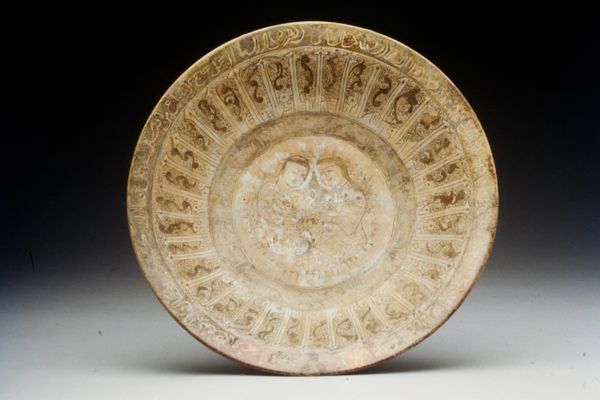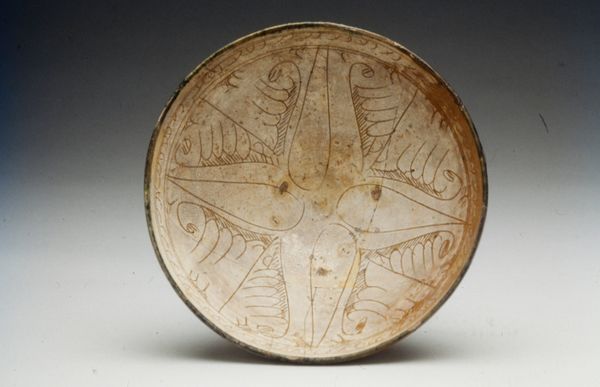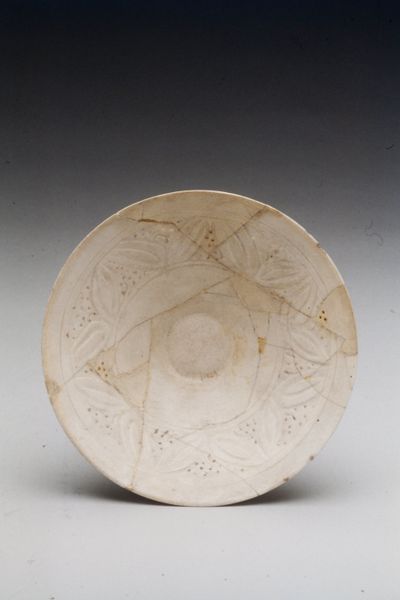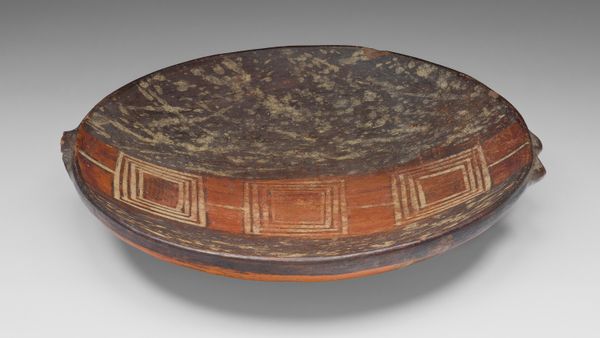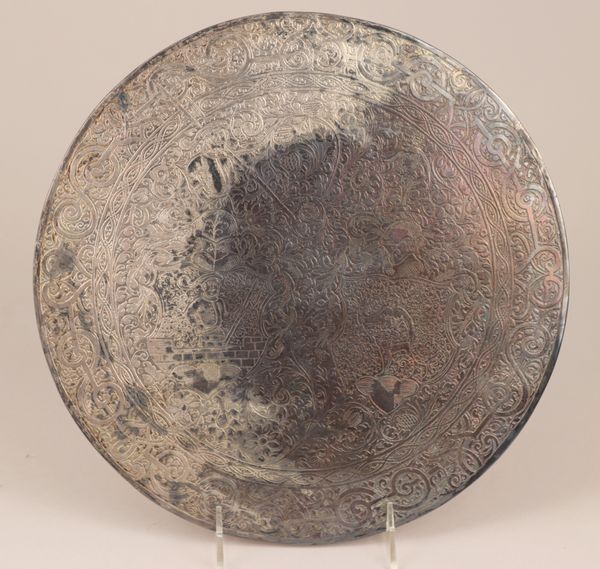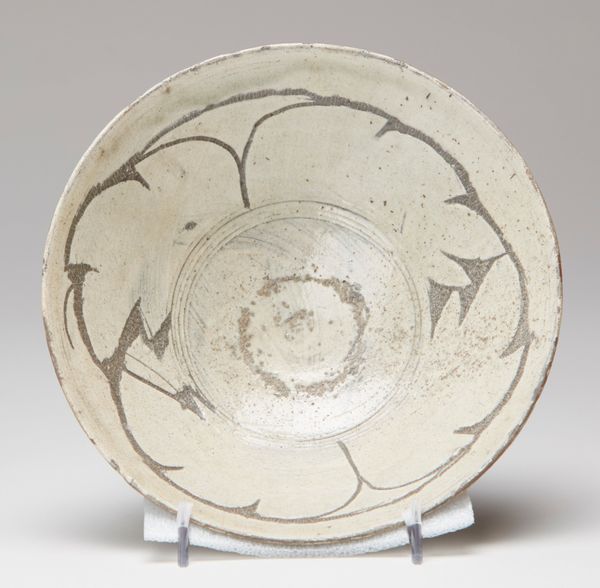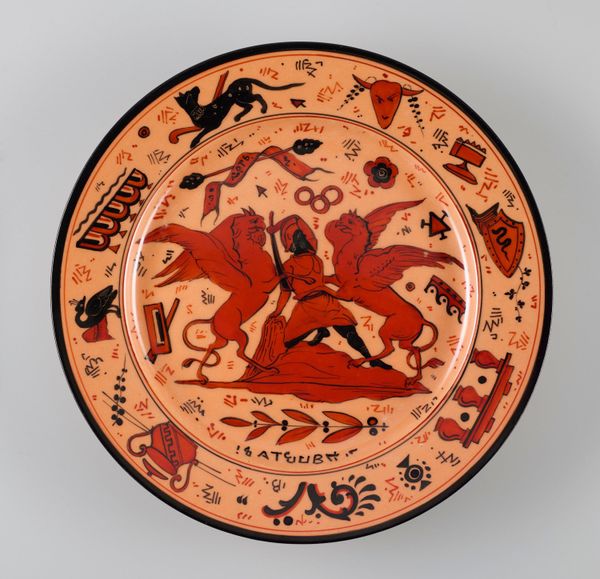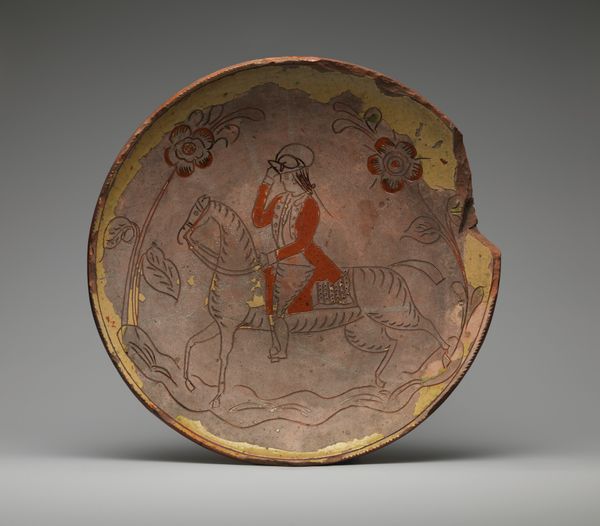
drawing, ceramic
#
drawing
#
ceramic
#
figuration
#
ancient-mediterranean
Dimensions: 2 3/16 x 13 9/16 in. (5.56 x 34.45 cm)
Copyright: Public Domain
Curator: Here we have a ceramic plate, dating from 600 to 900 AD. It is a Maya piece, currently held at the Minneapolis Institute of Art. Editor: Well, immediately, I'm drawn to the obvious cracks – the plate’s fragility and survival over all these years is striking, considering its apparent function and usage. And the figures! Such angular depictions of the seated human figures are intriguing. Curator: Absolutely, the cracks are a testament to the passage of time and the material's vulnerability, but the plate still stands as a testament to Maya artistry. If we consider this object within the context of Maya culture, the painted scenes offer insights into their beliefs and societal structures. How do the production methods contribute to this interpretation? Editor: As for the methods, the plate would likely have been fashioned by hand, then painted meticulously with natural pigments—possibly ochre or iron oxides to achieve these reddish tones. This object shows signs of skilled labor combined with readily available local materials, placing it in a tradition of communal creation and resourcefulness. Each step connects intimately to available expertise and accessibility of natural supplies. Curator: Yes, and those reddish hues provide visual cues, hinting at blood, royalty, or vital life forces deeply entwined in Maya symbolism. I am curious, what considerations arise when the artwork displays multiple levels of meaning simultaneously? Editor: It compels a look at both the decorative elements and the representational aspects. This plate exists in a matrix of usage—is it ritual, is it communal, is it trade—with material composition always closely reflecting its socio-economic function within that structure. I wonder if it would provide any unique insight to know how widely pieces like this were circulated, and among whom. Curator: Such an understanding encourages an open reevaluation of how societal power dynamics manifest through accessible domestic materials. The ability of this piece to serve both function and broader ideology is why it’s remained fascinating through its long history. Editor: And for me, its very physicality—the tangible link it gives us back to this world of material engagement and making, makes it ever appealing. I am left admiring not only its artful design, but all those steps from raw materials to skillful craftsmanship that preceded this moment of cultural display.
Comments
No comments
Be the first to comment and join the conversation on the ultimate creative platform.


